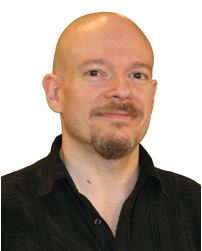Science in 'Alice's Adventures in Wonderland' (Infographic)

It began as a story told by Lewis Carroll to young Alice Liddell and her sisters during a boat ride on the Thames on July 4, 1862. Carroll later wrote down the story as a gift for Alice, embellished with many of his own drawings.
When John Tenniel was contracted to illustrate a version of the story in 1865, Carroll gave the artist a photo of the rather stern-looking Mary Badcock to use for inspiration.
At the start of her trip to Wonderland, Alice falls down a seemingly endless rabbit hole. As she falls, Alice wonders if the hole goes all the way through the Earth.
In reality, a falling object would accelerate toward the center of the Earth. Passing the center at maximum speed, the object would then start to slow down, reaching zero velocity at the other end of the hole. The trip through the Earth would take about 38 minutes in a vacuum, but about 2.5 days if the hole were filled with air.
Characters and situations in “Wonderland” are inspired by playing cards. The plot of the sequel, “Through the Looking- Glass,” is constructed as a giant (playable) chess problem. Alice is represented by a white pawn.
“Alice in Wonderland Syndrome” (AIWS) is a neurological disorder that affects perception. Sufferers may feel that objects (including themselves) are getting larger or smaller than they appear to be.
The crazed Hatter would have suffered from mercury poisoning, as the toxic metal was widely used in hat making at the time.
At the start of the sequel, “Through the Looking-Glass and What Alice Found There,” Alice gets to Wonderland by passing through a mirror. Themes of reversal and inversion appear throughout the book.
Years later, scientists discovered that organic molecules have “handedness,” or chirality. Left-handed and right-handed versions of organic molecules can often differer in odor, flavor and digestibility.
The Cheshire Cat famously has a habit of disappearing, leaving only his grin visible. The cat has been used as a metaphor in various scientific contexts.
Mathematician Martin Gardner notes in his “Annotated Alice” (W.W. Norton, 2000) that “a grin without a cat” is an apt description of pure mathematics. Equations are abstractions, existing in their own world, although they can be used to describe the structure of our physical world.
The phrase “Quantum Cheshire Cat” is used in physics to describe a situation in which a subatomic particle and its properties have been separated.
There are three queens in the Alice books: the playing-card Queen of Hearts in the first book, and the chess pieces White and Red Queens in the second. In evolutionary biology, the Red Queen Hypothesis states that sexually reproducing organisms must constantly adapt, evolve and reproduce simply to survive (that is, “keep in the same place”).
Sign up for the Live Science daily newsletter now
Get the world’s most fascinating discoveries delivered straight to your inbox.

